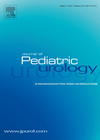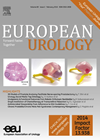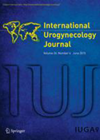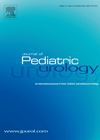
Journal Reviews archive for 2016
Barriers to use of semen analysis in the adolescent with a varicocele
This paper tries to address the question of identifying the cause of the difficulty in obtaining a semen analysis (SA) in adolescents with a varicocele in order to try to find improved strategies in giving patient advice, treatment and care....
TIP hypospadias repair
This paper by one of the current international leaders in hypospadias surgery looks at the outcome of over 1800 consecutive hypospadias repairs using the tubularised incised plate (TIP) repair, beginning from the first original operation through to sequential modifications over...
NICE - what we need to know?
The National institute for Health and Care Excellence (NICE) reached 17 years old in April 2016. As clinicians, we are reading and discussing NICE guidelines on a daily basis in multidisciplinary team meetings. NICE is always in the news, whether...
Junior doctors’ strike: is there light at the end of the tunnel?
Most urology departments will be affected one way or another by the ongoing industrial action by our junior colleagues. This article gives an interview between the BMJ team and Jeremy Hunt, UK Secretary of State for Health. We may or...
ASAP: is a repeat biopsy necessary?
This study examined the validity of current US and European guidelines on the management of patients diagnosed with atypical small acinar proliferation (ASAP). Current guidance states that these patients should undergo repeat biopsy within three to six months due to...
Active surveillance for renal neoplasms
Renal oncocytomas are the second most common benign renal tumours and they originate from the collecting tubules. They appear genotypically very similar to chromophobe renal cell carcinomas (chRCC), which also contain eosinophilic cells. Oncocytomas are often found incidentally on routine...
Preventive pharmacological therapy for kidney stones
Kidney stones are common, painful and are a chronic disease with a high lifetime risk of recurrence. Without treatment 35-50% of patients experience a second stone within five years of their first experience. Thiazide diuretics, alkali citrate treatment and allopurinol...
Stepwise voltage ramping causes less renal haematomas than fixed maximal voltage ESWL
Extracorporeal shock wave lithotripsy (ESWL) remains the recommended first line treatment for stones <2cm in the renal pelvis and upper or mid-pole calyces (Türk C, Knoll T, Petrik A, et al. European Association of Urology Guidelines on Urolithiasis. 2014). There...
Recurrent urinary tract infections in women
This review article defined women who had recurrent urinary tract infections (UTIs) as having either ≥ two episodes in the last six months or ≥ three episodes in the last 12 months. Using a number of databases, including the Cochrane...
Glans size is an independent risk factor for urethroplasty complications after hypospadias repair
In this analysis, prepubertal patients undergoing hypospadias repair over a four-year period had caliper measurement of glans width taken perioperatively. Multivariate logistic regression analysis was carried out for complications while adjusting for patient age, meatus position or type of repair....
Medical expulsive therapy for paediatric urolithiasis
Children who have kidney stones are likely to have recurrences. Many initial stones are treated conservatively allowing for spontaneous passage of small stones if possible. Doxazocin or tamsulosin are known to dilate the ureter and allow spontaneous passage of stones...
The challenge of psychological problems in enuresis treatment
The first sentence of the conclusion of this review article reads: “In the past decade the role of psychological factors in the pathogenesis of nocturnal enuresis has changed from a primary causal factor to a consequence or comorbidity.” The authors...











